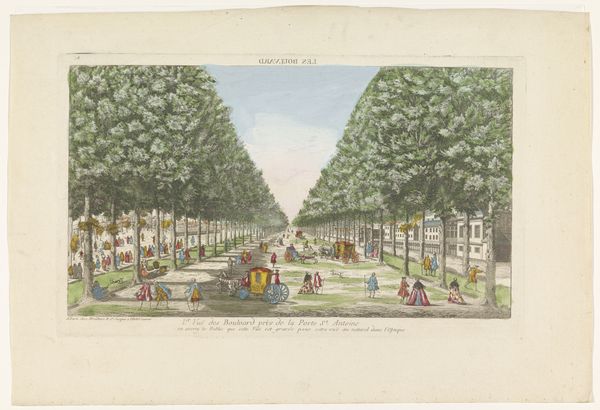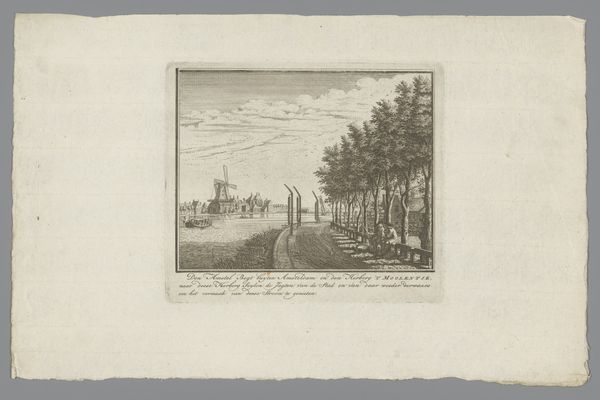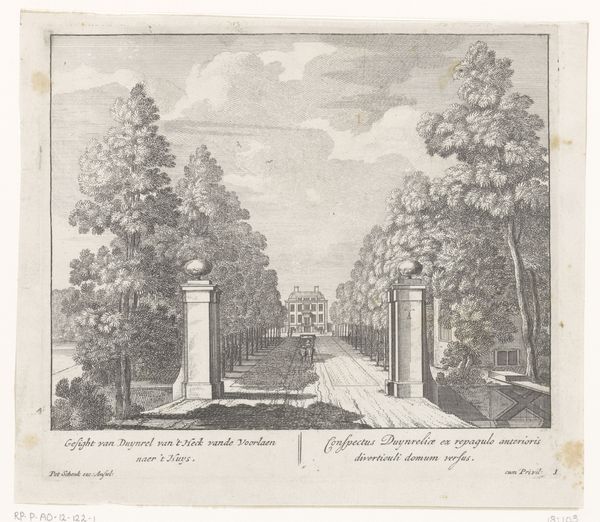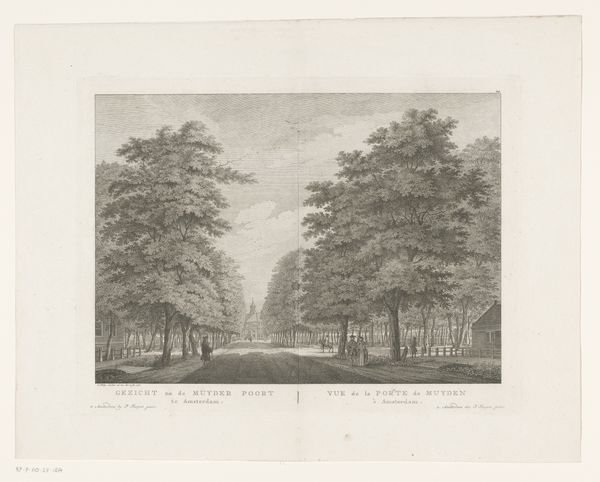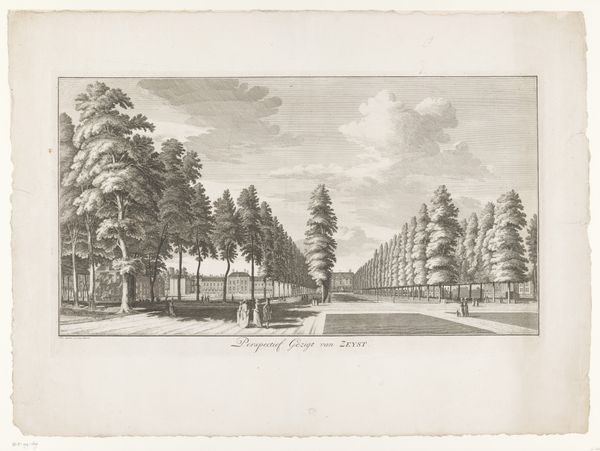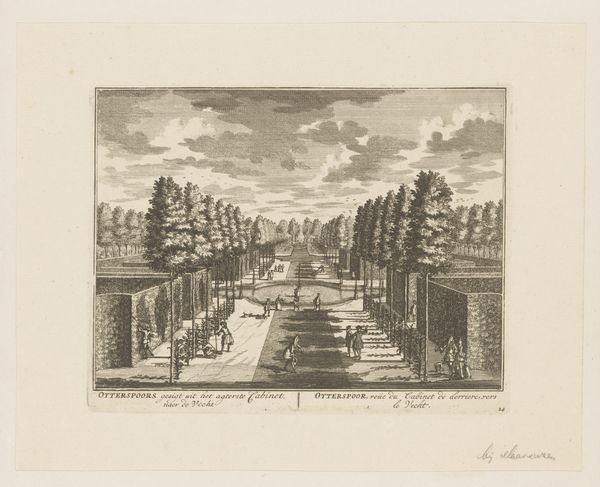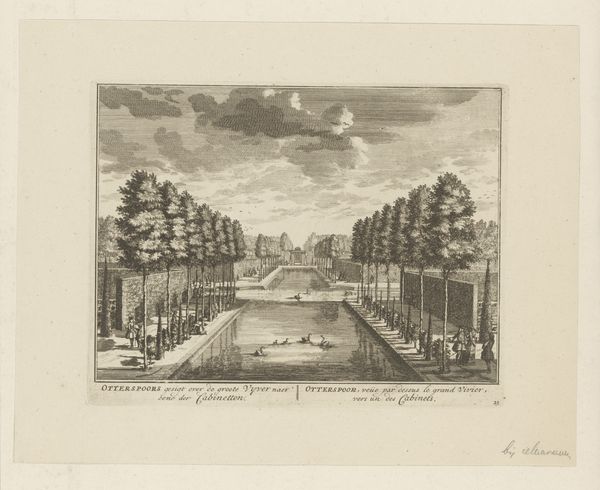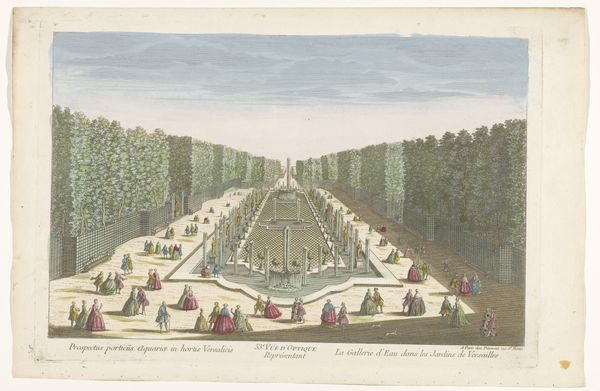
drawing, print, paper, watercolor
#
drawing
#
neoclacissism
# print
#
landscape
#
paper
#
watercolor
#
coloured pencil
#
cityscape
#
realism
Dimensions: height 309 mm, width 422 mm
Copyright: Rijks Museum: Open Domain
Editor: Here we have "View of an Avenue in the Surroundings of the Dammtor in Hamburg," a watercolor and print from 1783. It depicts a very formal avenue. I’m immediately struck by the crispness of the lines, but there’s also this soft, almost dreamy quality to the colors. How would you interpret a piece like this? Curator: The image presents an interesting intersection of the ideals of the late 18th century. This carefully constructed perspective, the attention to linear precision - it speaks to the burgeoning Enlightenment fascination with order, reason, and the controlled gaze. But consider Hamburg’s social landscape then; the Dammtor was not merely a gate but a symbolic threshold between the urban and the rural, the controlled city space, and the more 'natural' environment. Editor: So, the placement of the avenue near this gateway is significant? Curator: Precisely. Avenues like this became fashionable throughout Europe, but their existence often hinged on displays of civic pride and investment, reflecting a desire to project a specific image of prosperity and cultural sophistication. How do you think the perspective plays into that ambition? Editor: It certainly creates a sense of depth and grandeur, drawing the eye far into the distance... almost like the avenue is limitless, or is inviting the viewer to travel? Curator: Exactly. This manipulation of perspective, a hallmark of Neoclassicism, reinforces a sense of cultivated, intentional beauty – almost a utopian vision that these cities wished to promote. The promenade became a stage for social performance, a curated experience of nature for a certain segment of society. We must ask, of course, *whose* nature was being showcased and for *whom*? Editor: It is interesting how something seemingly so tranquil can actually be quite loaded with social and political meaning. Curator: Absolutely. By understanding the historical context, we see beyond just a pretty picture; it’s a visual document of a specific moment in time, a curated representation of power, progress, and social ideals.
Comments
No comments
Be the first to comment and join the conversation on the ultimate creative platform.



